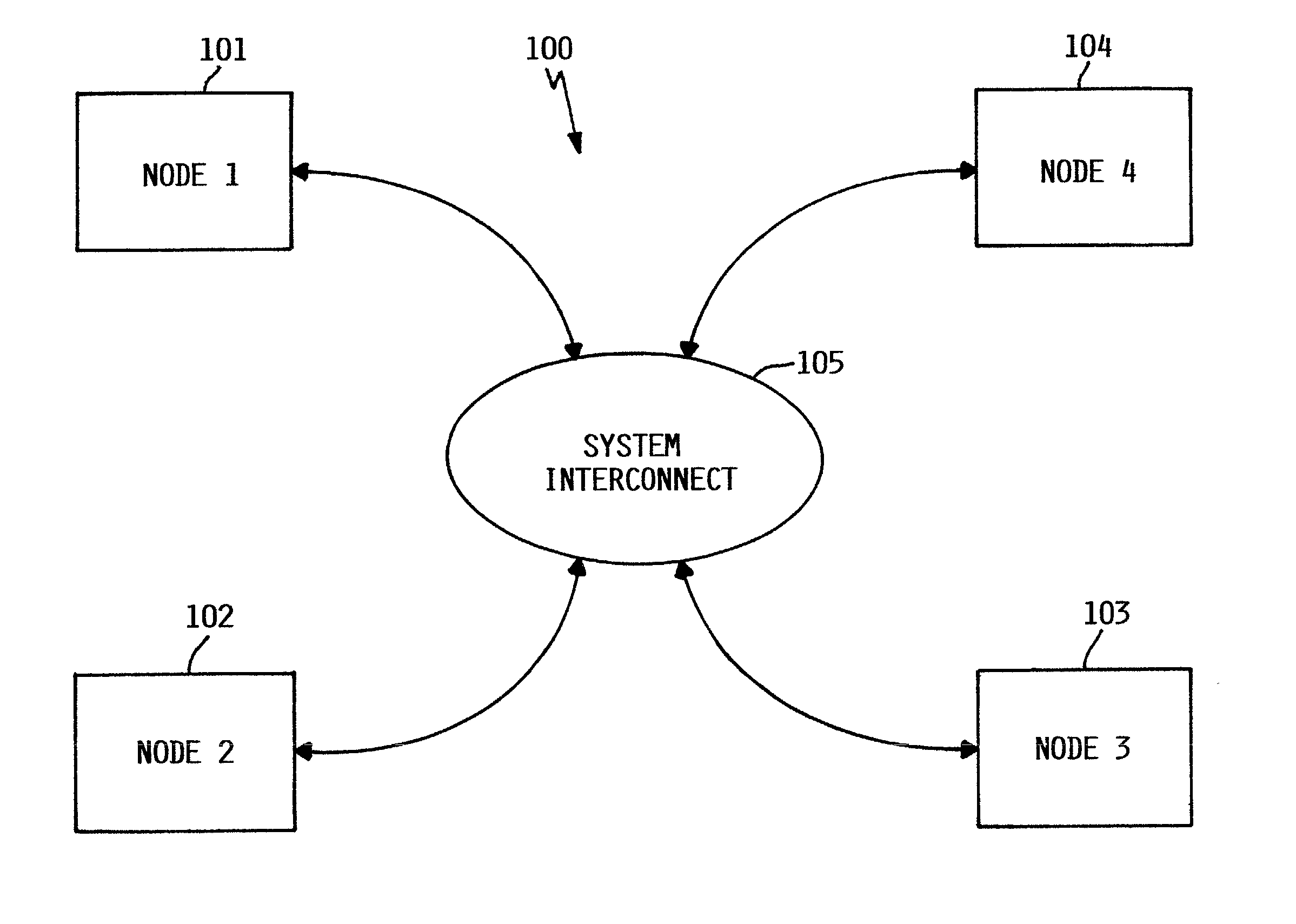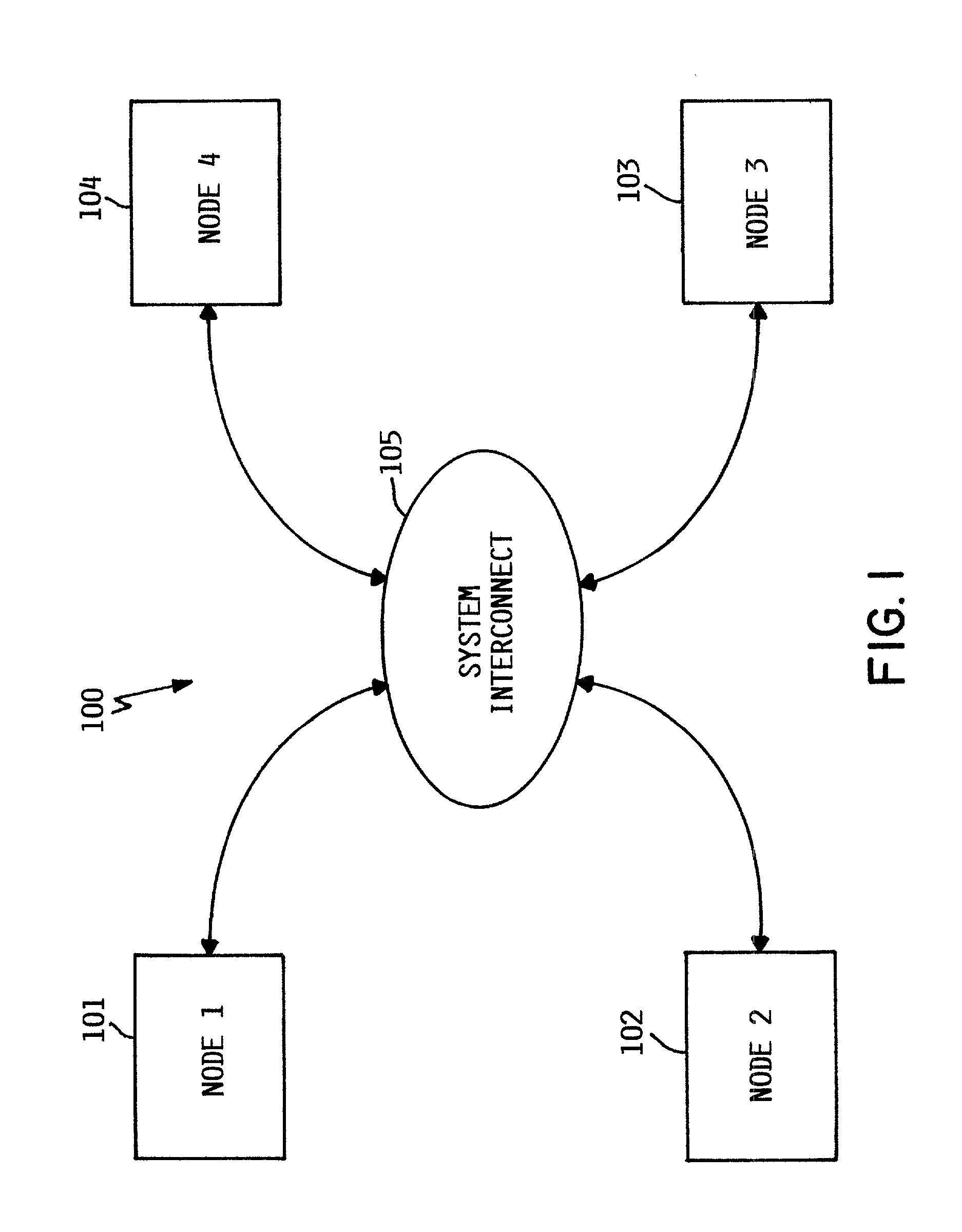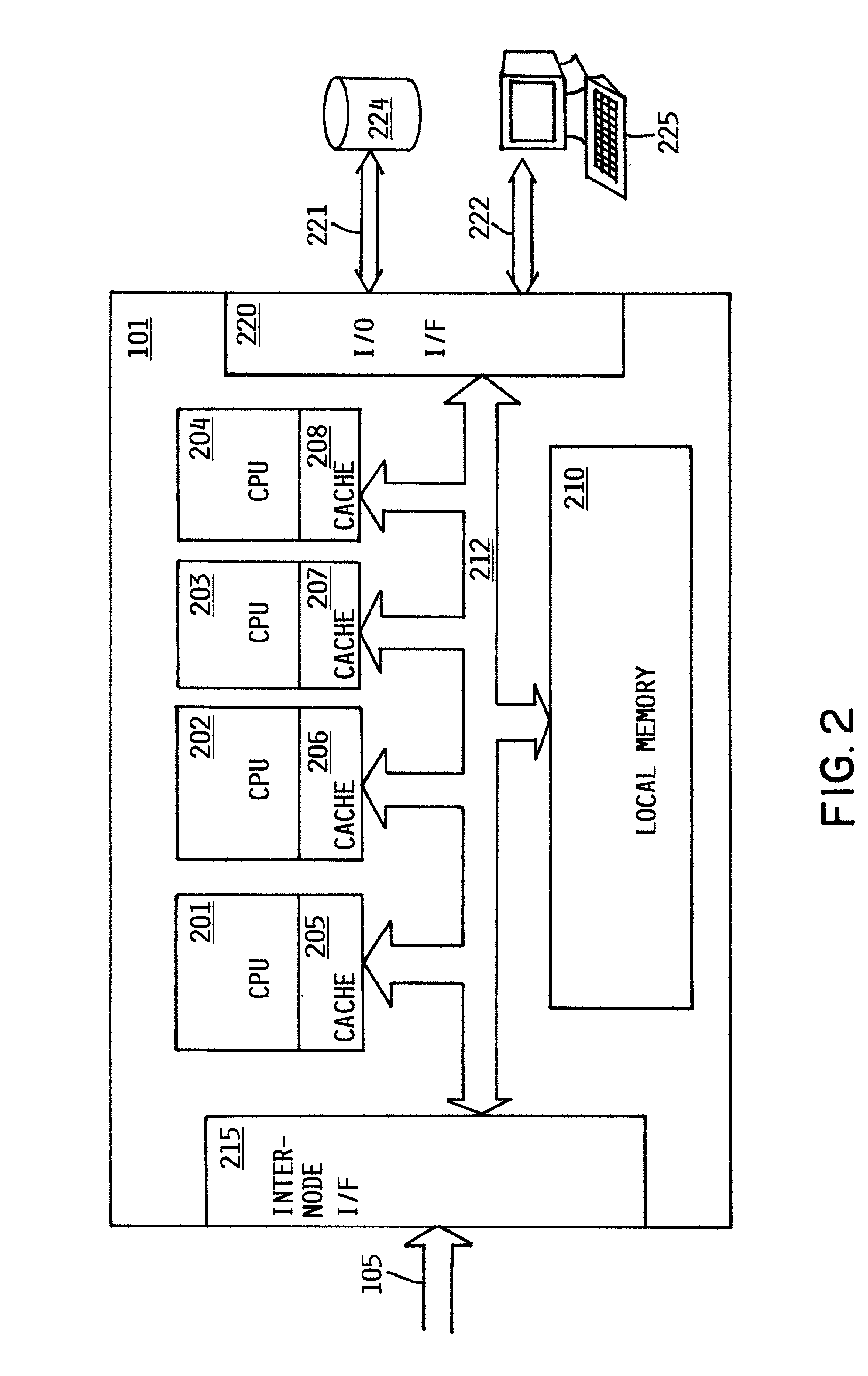Method and apparatus for dispatching tasks in a non-uniform memory access (NUMA) computer system
a computer system and task technology, applied in the field of multitasking computer systems, can solve the problems of system throughput, physical size reduction cannot continue indefinitely, and limit the ability to continue to increase the clock speed of processors, so as to avoid starvation
- Summary
- Abstract
- Description
- Claims
- Application Information
AI Technical Summary
Benefits of technology
Problems solved by technology
Method used
Image
Examples
Embodiment Construction
Overview
[0032]As described herein, a dispatcher for a multiprocessor, non-uniform memory access (NUMA) computer system dispatches threads for a single, global ready queue, takes a nodal affinity into account in selecting threads or tasks for dispatching to the various processors, so that each thread tends to execute in a consistent node, and memory pages needed by the thread tend to accumulate in the local real memory of that node. For consistency, the term “thread” is used herein to describe an instance of a sequence of computer executable instructions having its own state, which is the entity dispatched by a dispatcher. In some environments, these are referred to as “tasks”, and no distinction is made herein between “threads” and “tasks”. The term “thread” is used by some to imply that a process spawns multiple concurrently executable threads from a single program; however, as used herein, no such limitation should be implied, and a process may generate only a single thread of exe...
PUM
 Login to View More
Login to View More Abstract
Description
Claims
Application Information
 Login to View More
Login to View More - R&D
- Intellectual Property
- Life Sciences
- Materials
- Tech Scout
- Unparalleled Data Quality
- Higher Quality Content
- 60% Fewer Hallucinations
Browse by: Latest US Patents, China's latest patents, Technical Efficacy Thesaurus, Application Domain, Technology Topic, Popular Technical Reports.
© 2025 PatSnap. All rights reserved.Legal|Privacy policy|Modern Slavery Act Transparency Statement|Sitemap|About US| Contact US: help@patsnap.com



